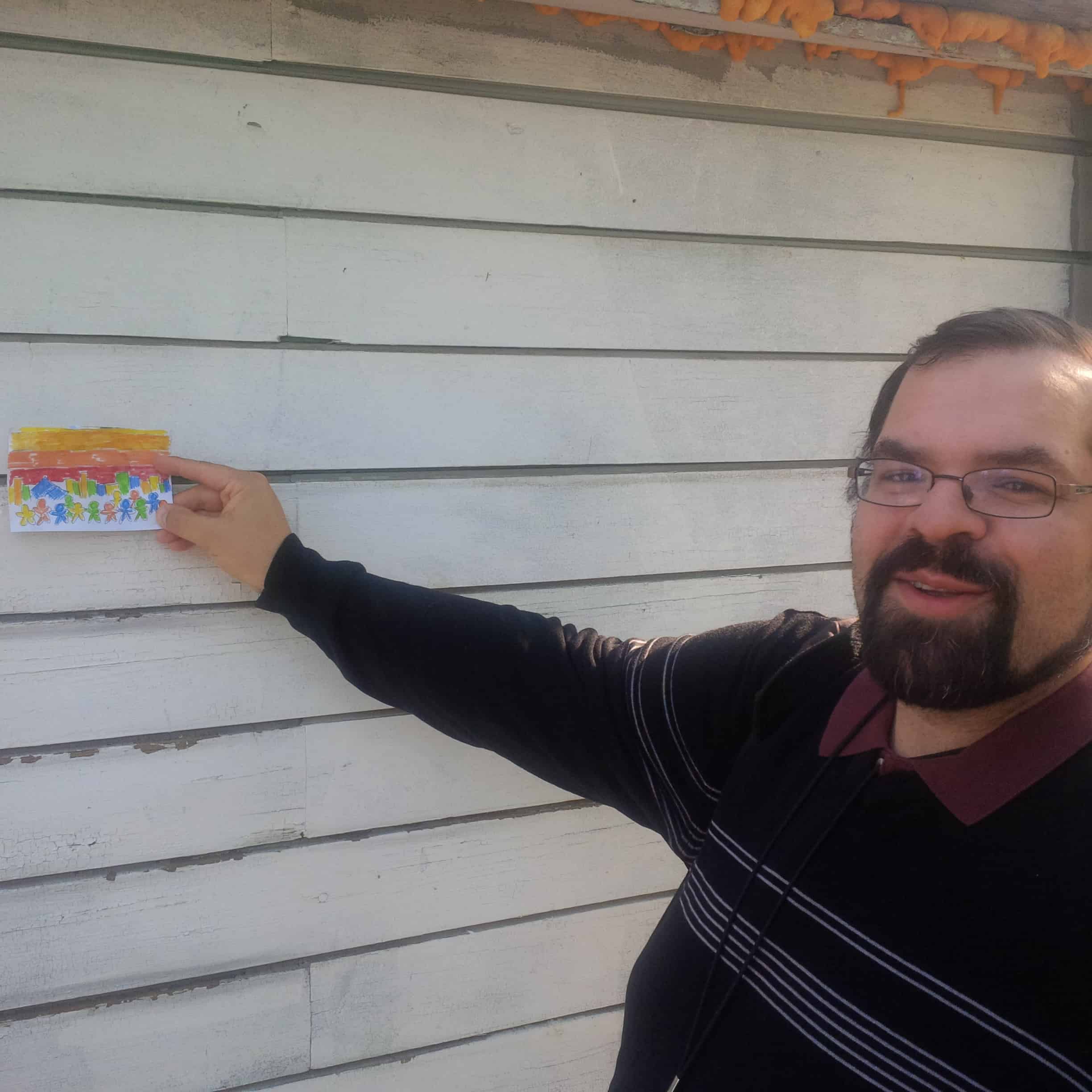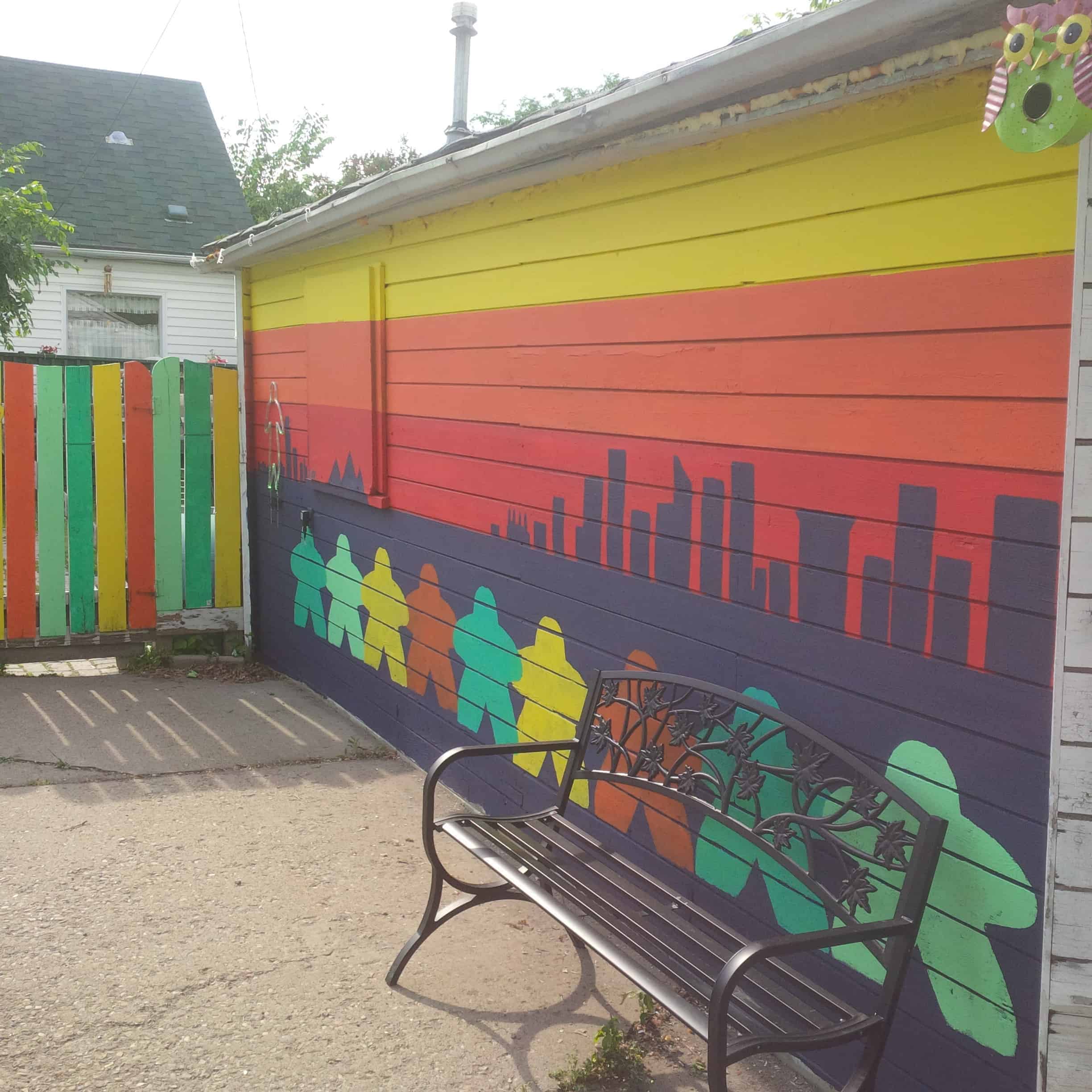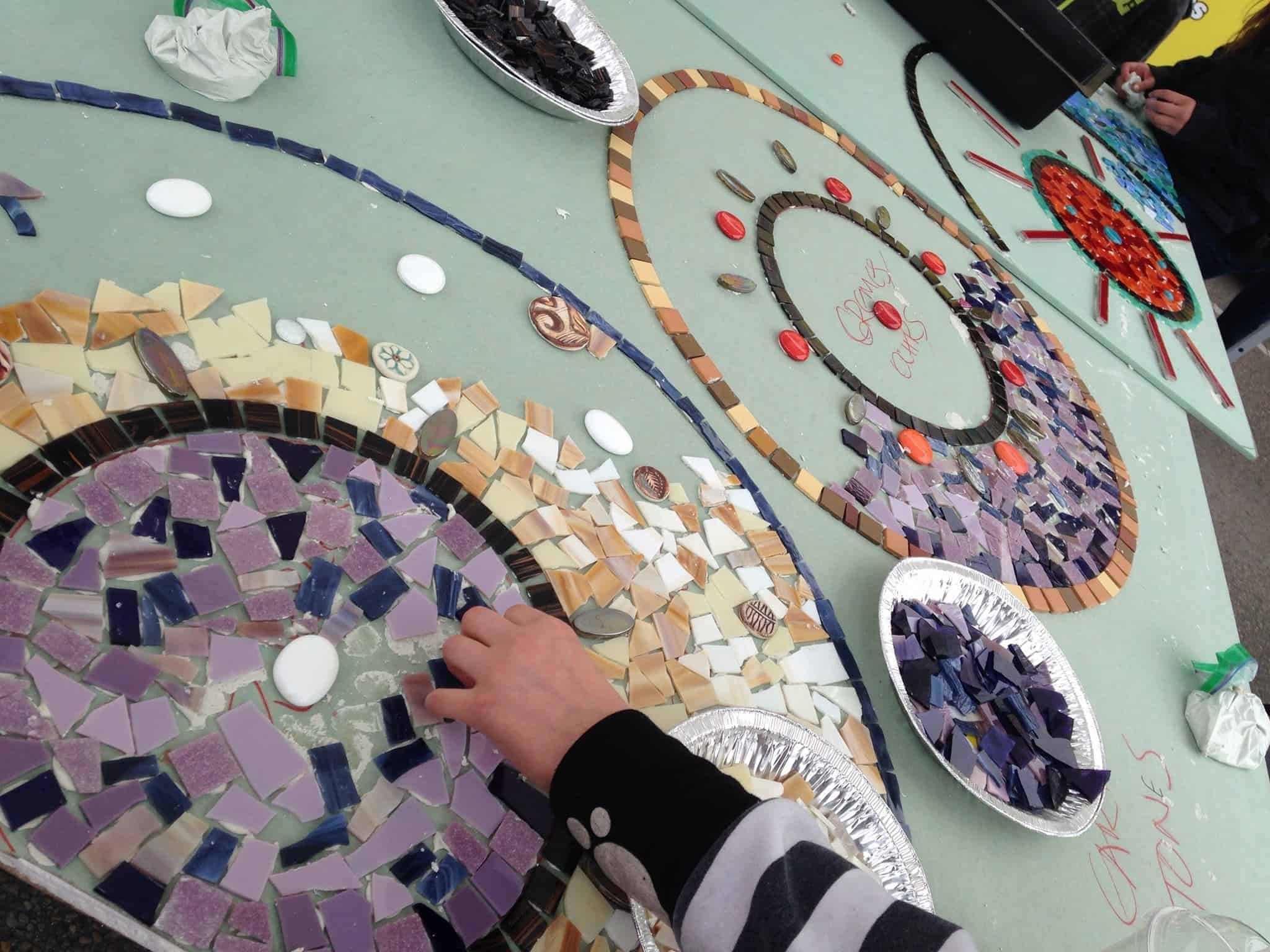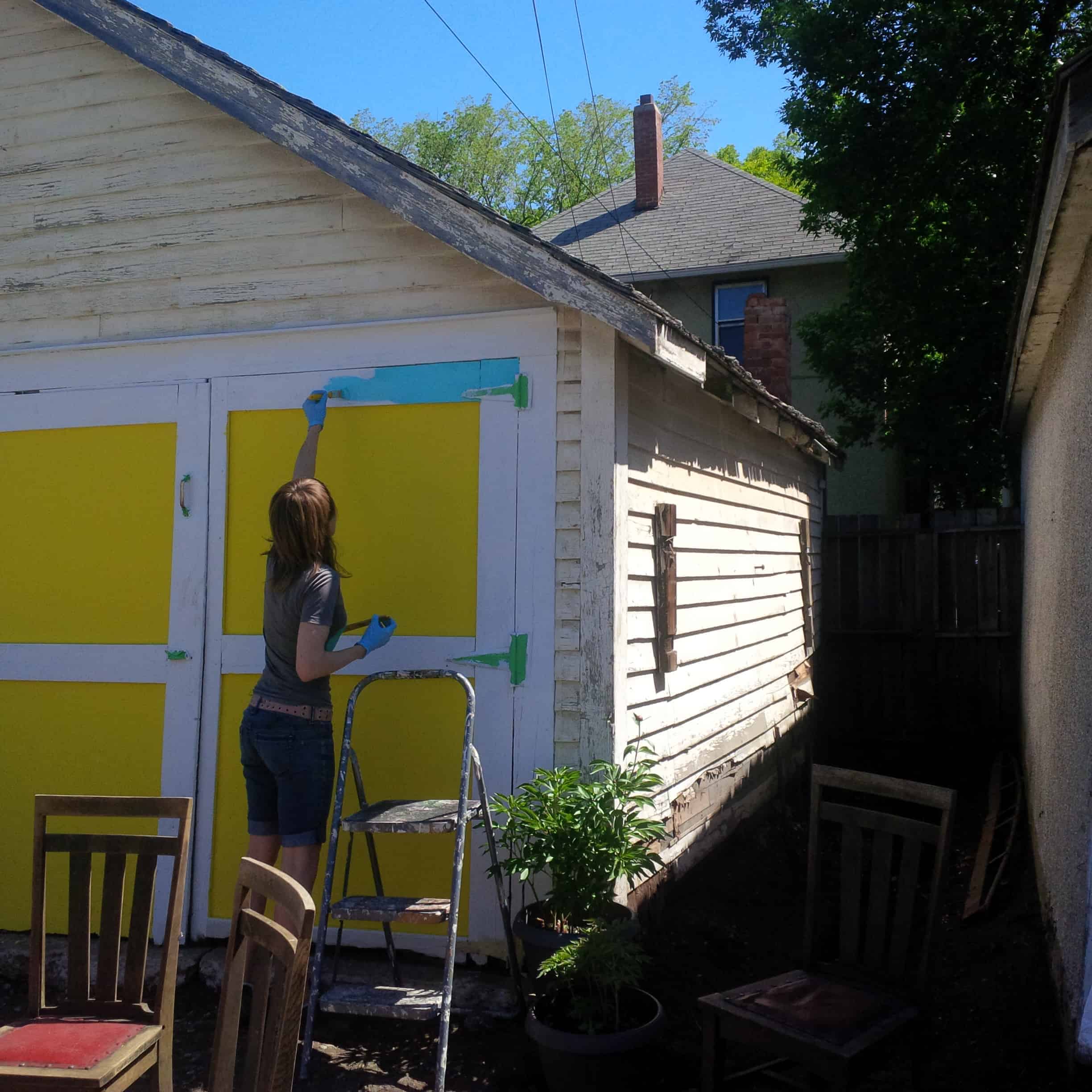The road to creating community initiatives
Many community initiatives happen in our area, encompassing everything from small community projects to big festivals.
Wesley Andreas, creator of Animate the Avenue Alleys, is a great example of someone who developed a successful initiative. A few years ago, he needed to repaint his garage, but wanted something creative. He participated in an event called DIY City and painted a simple, bright cityscape and silhouettes of people.
“I got such a positive response,” said Andreas. “I thought it could become a neighbourhood thing.”

A year later, he created Animate the Avenue Alleys for Make Something Edmonton’s 100in1Day project. He noticed alleys in the area could use some colour and that he could use the project to connect communities. He talked to Judy Allan, the Avenue initiative coordinator, who suggested holding a few drop-in events and partnering with Arts on the Ave (AOTA). He aimed for 10 alley projects and looked into funding so cost wasn’t a barrier.
He also connected with some artist friends.
“I got them to come to drop-in events and they gave advice on what people could do with the space they had,” he said, explaining he didn’t want people to think they had to be artists to participate.
Andreas said the process was a great experience.
“It was really fun for me because I got to see them [the projects] all, knew the story behind them,” Andreas said. “I think it was a positive thing for the neighbourhood, it got people involved.”
Although it helped he had experience painting his garage the year before, there was still a learning curve.

“It was the first time I ever said ‘let’s do this’ and had to organize it,” he said. “It was pretty involved with some organizing and follow up. The hardest part was convincing [participants] they could do it, that it’s not that hard.”
Andreas explained community initiatives help people feel connected to a neighbourhood, feel rooted, and feel a sense of belonging.
“A lot of new exciting ideas are community projects. Someone finds something that’s needed, has the energy to pull it together. A lot starts with a problem or issue. We needed to repaint the garage,” said Andreas.
Christy Morin, executive director of AOTA, said community initiatives bring people back to their passion.
“Life becomes much more full when people work in their passion,” she said.
Allan said initiatives bring beauty, physical changes, or increased socialization to a community.
“The Alleys project got people out of their house and connecting with neighbours,” said Allan. “Initiatives increase pride in community, how they feel about community. There’s a good feeling of people coming together and making their place a little more fun.”
Andreas has advice for anyone starting an initiative.
“Find partners—they’re good to run ideas by,” said Andreas. “Give [your project] a catchy name so that it sounds like it’s something. Find some legitimate supporters—there’s lots of organizations in the neighbourhood.”
Morin agreed. “Partnerships are really important when you’re starting. Find out whose project has a similar heartbeat. Other groups might have experience or know who you can connect to.” Morin explained these groups may know of important policies or bylaws involved.
Participating in a larger project may mean having access to support or resources, such as the ability to post your project’s page on that organization’s website. A project like 100in1Day is also an opportunity to test an idea on a smaller scale, much like a pilot project.
“Start small. Start with what you have,” said Morin. “Don’t be afraid of failure. It’s part of the process.”
Deadlines are important for following through. Andreas said he choose 100in1Day because it gave him something to work toward and commit to.
Allan added, “Move forward, make a good plan, execute the plan. Talk to people around you to get people on board. There’s so many resources out there, it’s just tapping into them.”
Andreas suggested planning to spend more time on certain tasks than expected, breaking the project into steps so people don’t get overwhelmed, and being open to different ways of advertising. Andreas used Twitter, but it wasn’t as successful as he hoped. Word of mouth, connections through his partners, and an ad he placed in the Rat Creek Press seemed to work.
Money doesn’t have to be a barrier. A variety of funding is available, such as Edmonton Heritage Council, Edmonton Arts Council, Alberta Foundation for the Arts, the provincial government (Community Initiatives Program), or crowdfunding.
For small projects, the Small Sparks Grant is available for another few years and funds up to $250. “The only criteria is that it’s innovative or connects communities,” said Allan.
Morin suggested, “I would talk to your [City of Edmonton] community recreation coordinator. They can help you write grants.”

The Norwood Neighbourhood Association (NNA) has grants available for “neighbourhood non-profit projects and events” and people can apply online.
“Normally we try to give small grants to more people. We try to spread it out,” said Gérard Forget, NNA board member. He said NNA funds things like small festivals or community gardening-related events. ‘We evaluate every application coming in. We like stuff that is community-oriented. We support our local people.”
As for Andreas, he has some ideas in mind for this year. “I would like to continue the alley project but start another. I need some helpers, I can’t do both,” he said.
One idea is celebrating and commemorating the Spruce Avenue neighbourhood’s history and name. Andreas said he may look into cut-outs of spruce trees or temporary street signs.
Another idea is to take part in the Canada 150 celebration by getting 150 red muskoka chairs.
“I’d offer them up to people to put on their front lawns, encouraging conversation on that day,” said Andreas.
Header image: Wesley Andreas with his garage painting sketch for DIY Edmonton. | Supplied
RESOURCES &/OR FUNDING
Your local community league
Judy Allan, Avenue Initiative Coordinator (780.496.1913)







